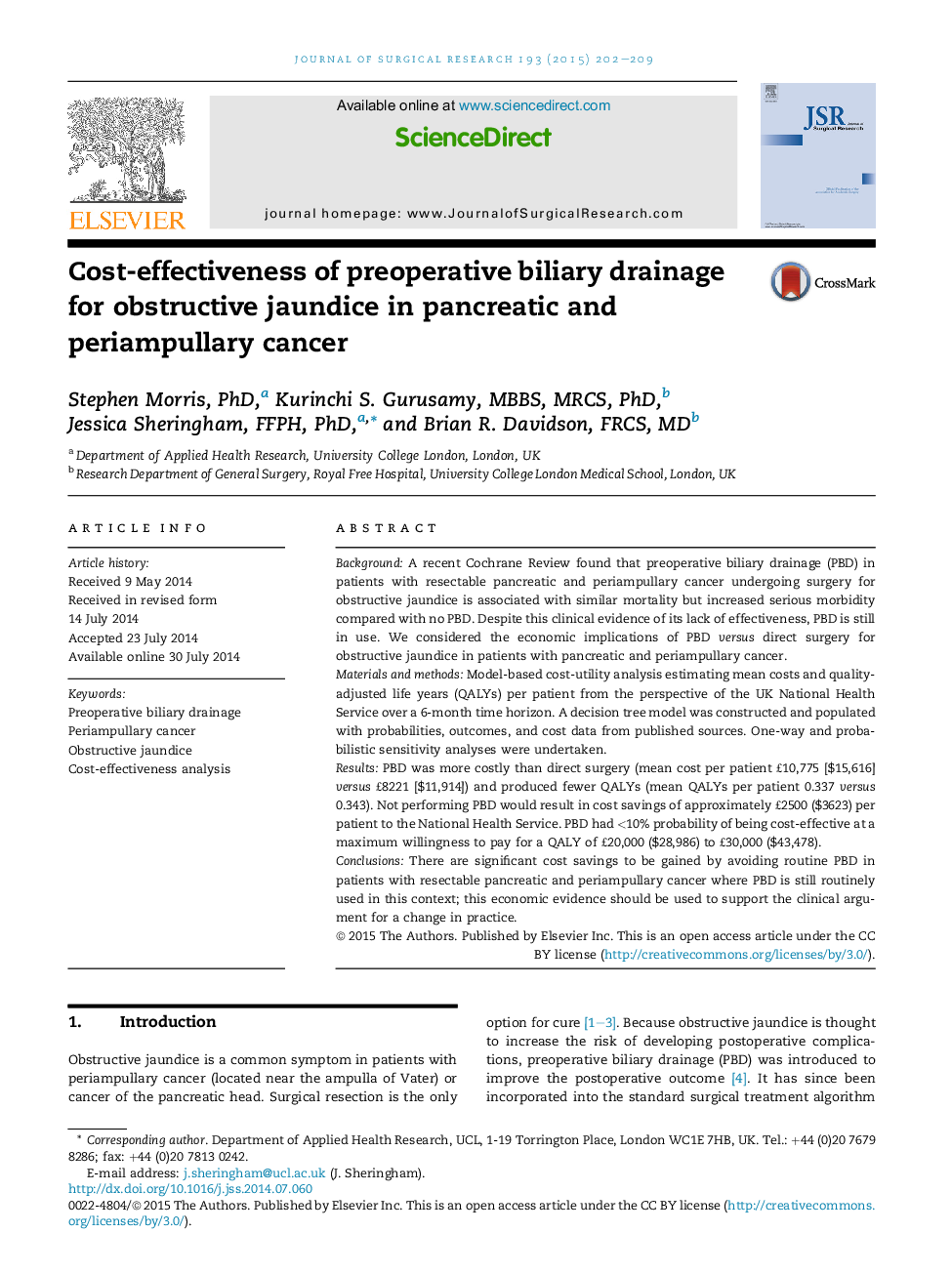| Article ID | Journal | Published Year | Pages | File Type |
|---|---|---|---|---|
| 6253716 | Journal of Surgical Research | 2015 | 8 Pages |
BackgroundA recent Cochrane Review found that preoperative biliary drainage (PBD) in patients with resectable pancreatic and periampullary cancer undergoing surgery for obstructive jaundice is associated with similar mortality but increased serious morbidity compared with no PBD. Despite this clinical evidence of its lack of effectiveness, PBD is still in use. We considered the economic implications of PBD versus direct surgery for obstructive jaundice in patients with pancreatic and periampullary cancer.Materials and methodsModel-based cost-utility analysis estimating mean costs and quality-adjusted life years (QALYs) per patient from the perspective of the UK National Health Service over a 6-month time horizon. A decision tree model was constructed and populated with probabilities, outcomes, and cost data from published sources. One-way and probabilistic sensitivity analyses were undertaken.ResultsPBD was more costly than direct surgery (mean cost per patient £10,775 [$15,616] versus £8221 [$11,914]) and produced fewer QALYs (mean QALYs per patient 0.337 versus 0.343). Not performing PBD would result in cost savings of approximately £2500 ($3623) per patient to the National Health Service. PBD had <10% probability of being cost-effective at a maximum willingness to pay for a QALY of £20,000 ($28,986) to £30,000 ($43,478).ConclusionsThere are significant cost savings to be gained by avoiding routine PBD in patients with resectable pancreatic and periampullary cancer where PBD is still routinely used in this context; this economic evidence should be used to support the clinical argument for a change in practice.
